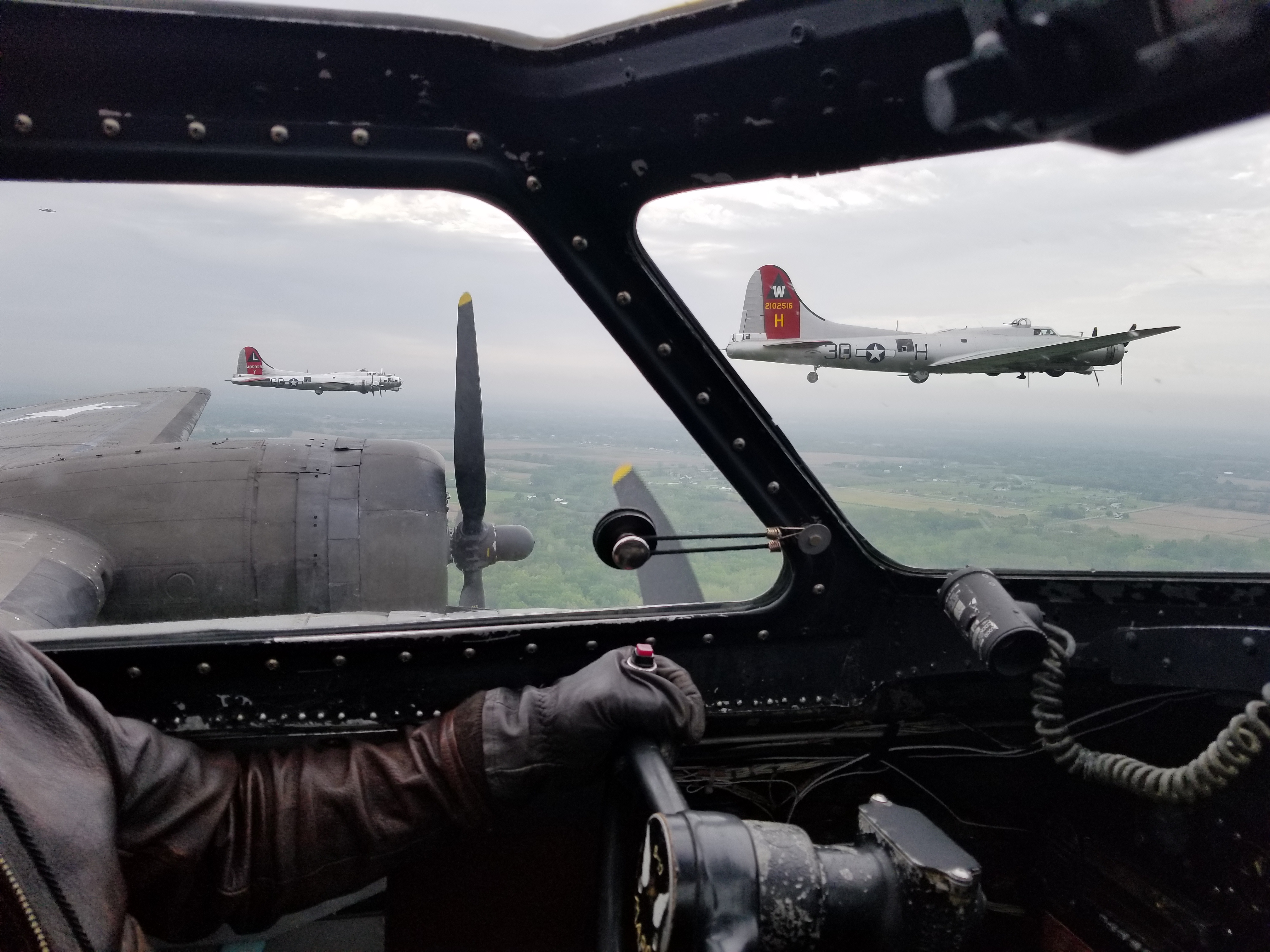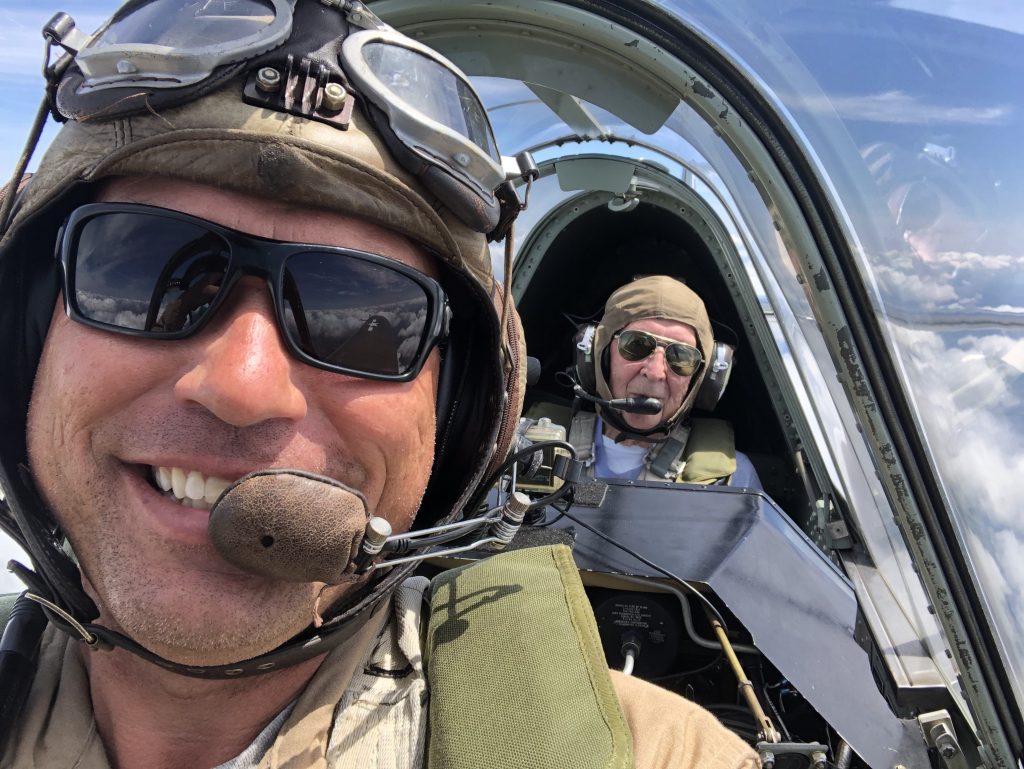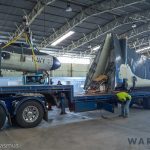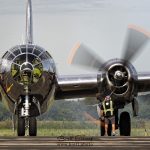While safety must ever be paramount, there is no such thing as a risk-free life. Anyone wishing for such monotony is condemning themselves, and likely those around them, to a tepid and flavorless existence. Life’s ‘rollercoaster’, after all, is often what inspires us to breath in more deeply, to dare, to dream, and in so doing, reach our full potential. Those of us whom reach for the sky do so because flying brings us great joy – it so often frames our lives and brings them real purpose.
The aviation world is a small family. Each of us likely knew, or knew the name of somebody aboard 909 last week. And whilst we grieve for the brothers and sisters we lost, we must also remember that nothing in life is guaranteed. Along those lines, we thought our readers might want to read this post from the well-regarded and highly experienced pilot Thom Richard…
Richard Mallory Allnutt – Editor
The Beauty of Flying Vintage Aircraft
Edited from a submission by Thom Richard
Have you ever spilled your cup of coffee?
With little concern, most of us – willingly and regularly – handle a liquid so hot it could leave us with third degree burns – maimed for life – even blind, or far worse. You do this without any protective gear or measures or burdensome regulations to prevent such injury or death. And why? Because it’s worth it to you… The reward overshadows the risk.
There are many such decisions you make every day, each with inherent risks involved. Those decisions are yours to make though – as they should be. In the USA, we have the inalienable rights to three things – life, liberty and the pursuit of happiness. But we do not have the right to a risk-free life. And why would anyone want such a thing? Arguably, the closest we come to risk-free living is something called solitary confinement.
Benjamin Franklin once said, “Those who would give up essential liberty, to purchase a little temporary safety, deserve neither liberty nor safety.” This holds true for any over-reaching regulations; we could call it a ‘helicopter-parenting’ style of government. Your right to make your own decisions should not disappear just because an accident occurs. For instance, we all have the right to climb a set of stairs, ride a bike, drive in the fog, eat bacon or swim in the ocean… The right to drive an antique car, command a classic boat or fly a vintage airplane should be considered similarly. Sure, few of them comply completely with present day safety regulations. But if they did, they would end up as yet another cookie-cutter modern design, rather than the charming, evocative piece of history that means so much to so many, and teaches us about our past.
I’m often asked if warbirds are “safe.” But really, how do you think an airplane got to be 75 years old? Nothing is perfectly safe – not even modern airline travel. However, through proper maintenance and training, we can maintain what the FAA calls, “an acceptable level of safety” in vintage aircraft… which is true for any mode of transportation.
If I were uncomfortable with the current level of safety, I would not have dedicated my life to flying warbirds, and I would certainly not take people flying in them. Accidents, while rare, do still happen, and sadly will continue to occur from time to time – but that is true for every aspect of daily life. All we can do is learn from them and try to mitigate future risk within reason. Indeed, have you ever heard of an antique car used as a daily driver for its entire existence that’s never been involved in any kind of incident? Such a vehicle probably doesn’t exist. Life can be a bumpy road at times, but the failure to try living it to the full would be a travesty.
More to the point – while no one should be required to fly a 75-year old airplane, we should certainly have the choice to do so if we wish. And that choice belongs to each of us. At its heart, life is defined by our choices. Some of us choose flying warbirds as part of experiencing our lives at their best. I can’t tell you how many times I’ve had people tell me that flying a warbird is the greatest thing they have ever done. Others choose to watch from the ground, which has its own set of joys and fulfillment. But for some inexplicable reason, some choose to spend most of their lives flopped on their couch instead of venturing out to experience the great things life has to offer. To each their own. The bottom line though is that it’s your choice, and always should be.
Returning back to that cup of coffee… While there are a staggering 1.1 million scalding injuries in the USA every year, absolutely no one is demanding a hot water ban. So I’m going to keep boiling water for my coffee in the morning. I’m certainly going to keep flying warbirds – and continue introducing people to the fantastic world of vintage aviation every day for as long as I can. I’m going to keep educating people about their past through the living history of flying warbirds. And I hope you choose to join me… You don’t have to – but the opportunity is there…
So let’s keep it that way. We learn and we grow after accidents, as always we must, but there is no need for the knee-jerk implementation of more restrictive regulations. We all lose when that happens.
Keep ’em flying!
Thom Richard
About Thom Richard
Thom Richard has been teaching in and wrenching on airplanes for over 30 years, with 12,500 hours of flight time of which more than half is in Warbirds and a quarter in helicopters, he’s very active on the airshow circuit performing aerobatic displays in P-40’s, P-51’s and Corsairs. World Cup winner in the Airrace 1 series and known for racing Unlimiteds, Jets and Formula 1 aircraft. He’s an avid aircraft restorer and operates a small air museum in central Florida along with his WWII vintage flight school, Warbird Adventures, Inc., primarily teaching in the P-40 Warhawk, T-6’s, and the mighty Boeing B-17 Flying Fortress.

























